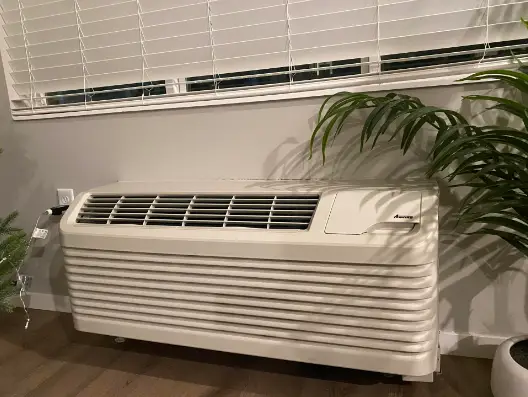Can You Put Furniture In Front Of A Ptac Unit
Can you put furniture in front of a PTAC unit? It’s a question that many homeowners and renters may have when it comes to their heating and cooling systems. The answer is not as straightforward as you might think, as there are several factors to consider before placing furniture in front of a PTAC unit. Can you put furniture in front of a ptac unit?

First and foremost, it’s important to understand what a PTAC unit is. PTAC stands for Packaged Terminal Air Conditioner, which is a self-contained heating and cooling system commonly found in hotels, apartments, and other commercial buildings. These units are typically installed through an exterior wall with the evaporator coil inside the room and the condensing unit outside.
When it comes to placing furniture in front of a PTAC unit, airflow is key. These units rely on proper air circulation to effectively heat or cool a space. Placing furniture directly in front of the unit can obstruct the airflow and impact its performance. It’s recommended to leave at least 12 inches of clearance around the unit to ensure adequate airflow.
In conclusion, while it may be tempting to place furniture in front of a PTAC unit for aesthetic reasons or space optimization, it’s crucial to prioritize functionality over appearance. By allowing for proper airflow around the unit, you can ensure that your heating and cooling system operates efficiently and effectively. So before rearranging your living room or office space, take into consideration the needs of your PTAC unit for optimal comfort and performance.
Can you put furniture in front of a PTAC unit
Yes, you can definitely place furniture in front of a PTAC unit, but it is crucial to ensure proper airflow and maintain sufficient clearance to guarantee optimal performance and efficiency. When positioning furniture in front of a PTAC unit, it is important to consider the location of the intake and exhaust vents. These vents allow for the exchange of air, which is essential for the unit’s functionality. Blocking these vents with furniture can impede airflow, causing the PTAC unit to work harder and potentially lead to overheating or system malfunctions.
To avoid any issues, it is recommended to leave a minimum clearance space of at least 12-18 inches between the furniture and the PTAC unit. This allows for adequate ventilation and prevents any obstruction that could hinder its performance. Additionally, regular maintenance should be conducted by professionals offering PTAC repair, installation services, and maintenance services in New Jersey or nearby areas. By doing so, you can ensure that your PTAC unit remains in optimal condition while enjoying the comfort it provides.
As we move on to discuss whether you can put a desk over a vent without compromising airflow, it is essential to maintain an understanding of proper ventilation practices for efficient heating and cooling systems without sacrificing your desired freedom within your living space.
Can you put a desk over a vent
Surprisingly, even the most ambitious of desk arrangements can find a way to obstruct the path of that precious warm air. People say I’ve been searching for reliable PTAC repair near me because my office’s cooling system isn’t working properly in this summer heat. When setting up a desk over a vent, it’s important to consider the airflow and how it might be affected by the furniture placement. Here are five key things to keep in mind:
- Air circulation: Placing a desk directly over a vent can impede proper air circulation, causing uneven heating or cooling in the room. This can lead to discomfort and inefficient energy usage. To ensure optimal performance of your PTAC unit, it is recommended to avoid obstructing the vents.
- Efficiency: Blocking the vent with a desk may force your PTAC unit to work harder than necessary to maintain desired temperatures. This increased strain on the system can result in higher energy consumption and potential wear and tear on its components. It is advisable to arrange your furniture in such a way that allows for unobstructed airflow around your PTAC unit.
- Maintenance: Placing heavy furniture like desks over vents can make it difficult for regular maintenance tasks such as cleaning or inspecting the PTAC unit. Accessibility is crucial when it comes to ensuring efficient operation and addressing any potential issues promptly.
- Noise reduction: One advantage of positioning furniture away from vents is minimizing noise disruptions caused by air blowing through them. By keeping your desk clear of vents, you can create a quieter workspace conducive to concentration and productivity.
- PTAC services near you: If you’re unsure about how best to position your desk without hindering your PTAC unit’s performance, reach out to professional PTAC installers or repair services near you for expert advice specific to your setup. They have extensive knowledge in optimizing HVAC systems for maximum efficiency.
By considering these factors, you can strike a balance between creating an ideal workspace arrangement while also ensuring unhindered airflow for your PTAC system’s optimal functioning.
Moving on, let’s delve into the question of whether it is permissible to place furniture over a vent.
Can you put furniture over a vent
Consider the potential consequences of obstructing a vent with your furniture, as it may disrupt the airflow and hinder efficient temperature regulation in the room. When furniture is placed over a vent, it restricts the airflow and prevents proper distribution of heated or cooled air throughout the space. This can lead to hot or cold spots in the room, making it uncomfortable to be in. Additionally, blocked vents can cause strain on your HVAC system as it works harder to push air through the obstruction. This can result in increased energy consumption and higher utility bills. Read can PTAC units be used in residential homes.
Moreover, obstructed vents can also impact indoor air quality. When air cannot circulate freely, dust and allergens may accumulate around the blocked area. This can lead to poor air quality and potential health issues for individuals sensitive to airborne particles. It’s essential to maintain good airflow by keeping vents unobstructed to ensure a healthy living environment. PTAC heating and cooling units offer versatile climate control solutions, making them a popular choice for both residential and commercial spaces. For any inconvenience, contact Bluco Mechanical or call us at (929) 447-2077.
While it may be tempting to place furniture over a vent for aesthetic reasons or space optimization, doing so can have negative consequences on both comfort and energy efficiency. By keeping vents clear from obstructions, you allow your HVAC system to operate optimally, ensuring consistent temperatures throughout your space while promoting good indoor air quality. So let’s prioritize freedom of airflow by avoiding obstructing our vents with furniture and enjoy a comfortable and healthier living environment instead!
Frequently Asked Questions
What is a PTAC unit and how does it work?
A PTAC unit, or Packaged Terminal Air Conditioner, is a self-contained heating and cooling system commonly found in hotel rooms. It works by drawing in outside air, filtering it, and then conditioning it to create a comfortable indoor environment.
What are the potential consequences of blocking a PTAC unit with furniture?
Blocking a PTAC unit with furniture can have serious consequences. It restricts airflow, leading to reduced cooling or heating efficiency, increased energy consumption, and potential damage to the unit. It’s crucial to maintain proper clearance for optimal performance and longevity of the system.
Are there any specific guidelines or recommendations for furniture placement in front of a PTAC unit?
When it comes to furniture placement in front of a PTAC unit, it is important to follow certain guidelines. Considering factors such as airflow restriction and safety, it is recommended to maintain proper clearance for optimal performance and prevent any potential hazards.
Can blocking a PTAC unit with furniture affect its performance or efficiency?
Blocking a PTAC unit with furniture can negatively impact its performance and efficiency. Restricted airflow may lead to reduced cooling or heating capacity, increased energy consumption, and potential damage to the unit. It is important to maintain clear space around the PTAC for optimal functioning.
Are there any alternative options for furniture placement to avoid blocking the PTAC unit?
To ensure optimal performance and efficiency of a PTAC unit, it is advisable to avoid blocking the air intake or exhaust. Alternatives include placing furniture beside or behind the unit, using open shelving, or opting for portable furniture that can be easily moved when needed.



No Comments
Be the first to start a conversation